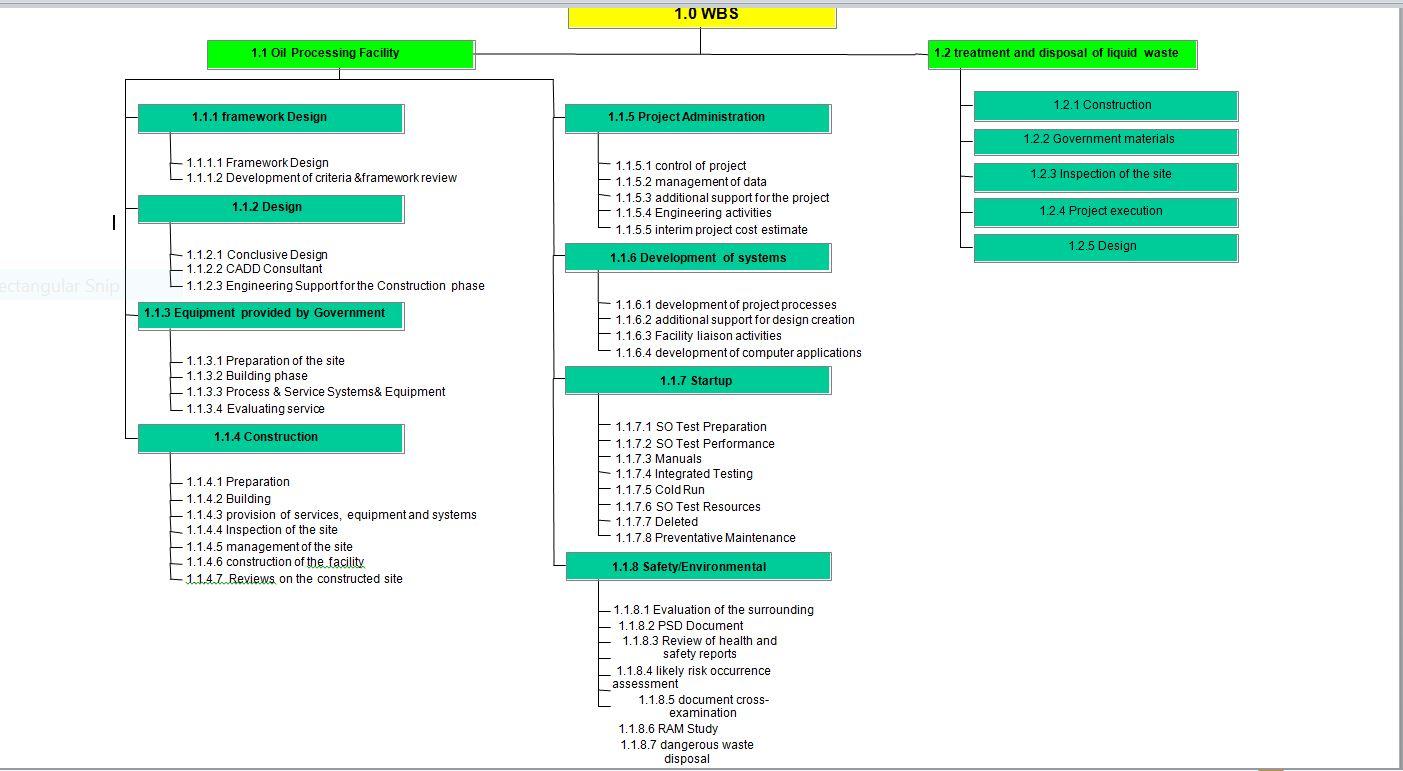Introduction
A project work breakdown structure enables the logical analysis of project components (Devi & Reddy 2012). Mostly, a WBS should be presented in a diagrammatic representation as this is the simplest way to outline the various sets of work required for the completion of the project. The hierarchical presentation is to ensure that the works presented reflect their subset order in execution. This implies that the performance of an important role is dependent on its supporting activities (Brotherton 2008).
According to the Department of Energy, the work-based structure can either take up the form of a contract or a project. The above work-based structure chooses to highlight a project-based work structure, which essentially considers all the elements required in the project, also acting as a basis through which subcontractors can develop their CWBS (Cleland, King, & Lavold 1988).
Main Discussion
Through this structure, one can decipher the relationship between project parts and components. This is mainly in the form of a hierarchy structure, with each element of the plan explaining the technical aspects, evaluating costs, and stating the scheduled time for when the action should be taken (D’arrigo & Smith 998). The above WBS is a great pillar in implementing the project. Through the above structure, the project team members are presented with the capability to understand the code and structure of the various processes required to complete the oil project. Thus, the project includes a project baseline imperative for the technical objectives needed to carry out the project.
Overall, the WBS ensures proper project management throughout the full project lifecycle in terms of recognizing, allocating, and tracking already accomplished jobs (U.S. Department of Energy 2012). The key characteristic that the above WBS has taken up is the use of language and simple terms that can easily be defined and understood by all the project members even at first glance. From the above WBS, it is possible for the team leader to assign duties and project responsibilities to each team member as all units of work are high.

Reference List
Brotherton, SA 2008, Applying the work breakdown structure to the project management Lifecycle, Project Management Institute, Newtown Square, PA.
Cleland, DI, King, WR & Lavold, GD 1998 Project management handbook, second edition, John Wiley & Sons.
D’arrigo, CS & Smith, DE 1998, U.S. Patent No. 5,848,394, U.S. Patent and Trademark Office, Washington, DC.
Devi, TR & Reddy, VS 2012, ‘Work breakdown structure of the project’, International Journal of Engineering Research and Applications vol. 2, no. 2, pp 683-686.
U.S. Department of Energy 2012, Work breakdown Structure handbook. Web.